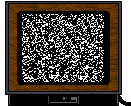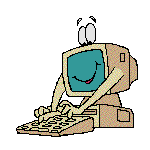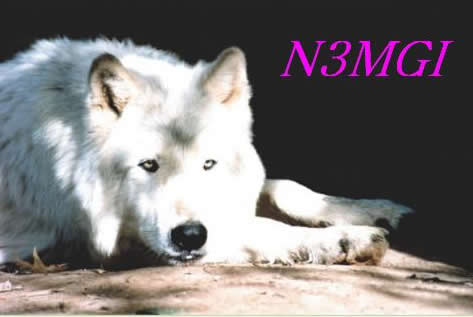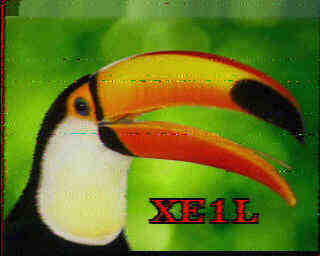SSTV
Getting Started

Since you are reading this, you already have the most expensive part of the Slow Scan Television system. Chances are if you have a newer multi-media capable computer is that you already have a sound card as well. The simplest way to get down to business is to start listening in on some QSO's on the bands, try 14.230 or 14.233 MHz USB for starters or perhaps 3.813 MHz LSB as well.
What you are listening for is something that sounds like this which is in mode Scottie 1 but other modes will sound similar.
Check out some of the sites that I have included here for file downloads and install a sound blaster compatable program such as W95SSTV. Simply plug your receiver or transceiver audio output directly into the sound card input line and assuming that your card is configured properly you are just about set to start receiving some great photos off the airwaves. Many popular programs include some form of tuning indicator to show the proper frequency to dial into but you can also see an indication of a received signal here. Most of the programs will autoset to the proper format mode at the beginning of the picture transmission and most good operators will announce in which mode they intend to send. There are at least 27 commonly used transmission schemes in use but don't fret, Scottie 1 and Martin 1 are the most common in use, folks want to use a common mode for the most contacts. You will almost immediately start to see the picture appear before your eyes (especially in faster systems) and most of the programs in use will give you the ability to not only save the picture for later viewing, often automatically and unattended; but also to edit the picture or add text of some sort. I suggest you get familiar with the program you are using and also listen to the operating practices of other SSTVer's, especially on how to break into the action.

OK you say, "I want to get on the air, what now?". Of course first you have to get setup to transmit your picture. I will refrain to discussing the sound card interface here but don't neglect to consider the hamcomm or similar interface or stand alone systems. The best part of the sound card is that it is already made to convert digital signals to audio and back again, plus it is probably already handy in your system. If you have a vox input on your rig you can simply plug your soundcard output into the vox input of your rig and your set to go (you may wish to consider installing an isolation transformer or similar device inline here). If you don't have a vox capable rig, no problem; a very simple circuit can be built to accomplish this task. Feel free to try out my simple design that I included herein or craft your own circuit.
Now the big question might be just what are you going to send? There are tons of pictures available on the internet for capture by generally clicking your right mouse button over the picture and saving to disk in most web brousers. With a readily available shareware program such as LView Pro or Paint Shop Pro on hand to edit your work, you soon will have eye catching masterpieces to send out to all your new friends on the airwaves.
Flatbed scanners have recently plummeted in price (I grabbed one for under $139.00) and good quality digital cameras can be had for under $300.00 to put some of your photos and family shots on the air, with great results. Check out some of my photos on my homepage for examples of the the quality of these modes. Many film developers will process your standard 35 mm photos and other formats into photo CD or floppy diskette for a small upcharge.
At this point you should have enough information on hand to break out of the stone age and get started in this great aspect of our hobby.  Hope to copy some of your creations soon!
Hope to copy some of your creations soon!
This Site Designed and Maintained by David M. Frei
![]()
Number of Visitors this Month


